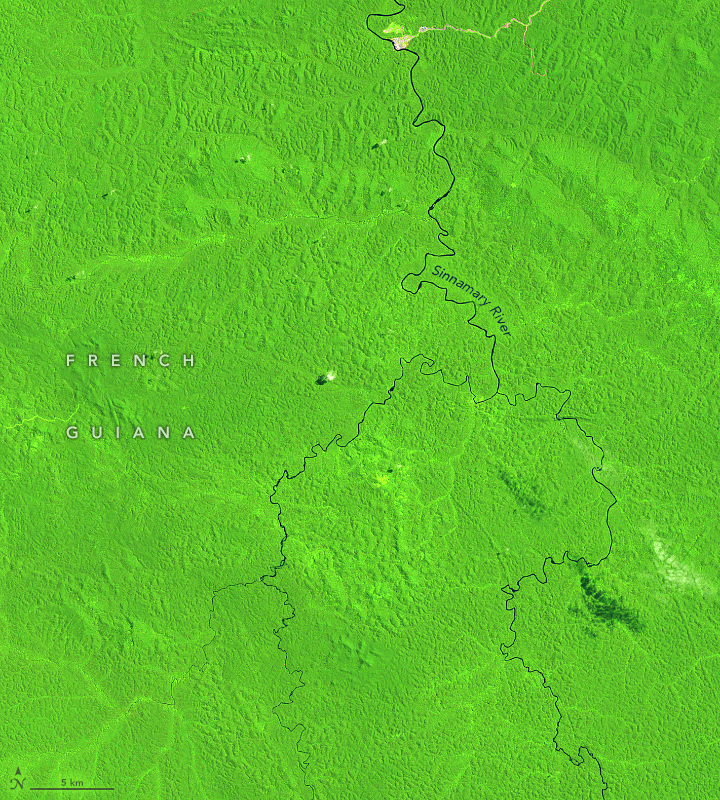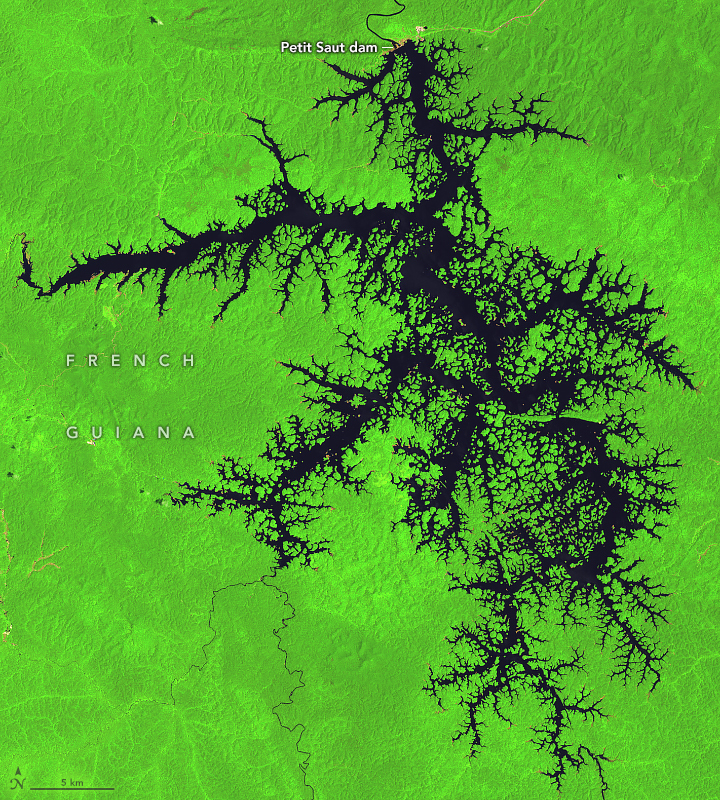

Petit Saut Reservoir
Downloads
- frenchguiana_dam_tm5_19900724_lrg.jpg (1421x1579, JPEG)
- frenchguiana_dam_oli2_20241001_lrg.jpg (1421x1579, JPEG)
Metadata
- Sensor(s):
- Landsat 5 - TM
- Landsat 9 - OLI-2
- Data Date: July 24, 1990 - October 1, 2024
- Visualization Date: October 25, 2024
In northeastern South America, the Sinnamary River winds its way north for 250 kilometers (160 miles) through forested French Guiana. Before spilling into the Atlantic Ocean, the river’s flow is interrupted by a dam upstream.
Between 1989 and 1994, a hydroelectric dam, known as Petit Saut (“little jump”), was constructed 70 kilometers inland from the mouth of the river. Damming the river created a reservoir, which can be seen in the false-color image above (right), acquired by the OLI-2 (Operational Land Imager-2) on Landsat 9 on October 1, 2024. The other false-color image (left) shows the same area in 1990, before the dam was completed.
The reservoir started to fill in January 1994 until water levels at the dam reached a maximum height of 35 meters in July 1995. The area of the reservoir grows and shrinks based on seasonal variability, but it covers on average about 300 square kilometers (100 square miles). The dam has the capacity to generate 160 megawatts of electricity for French Guiana’s coastal towns, where most of the region’s population lives.
References & Resources
- Abril, G., et al. (2005) Carbon dioxide and methane emissions and the carbon budget of a 10-year old tropical reservoir (Petit Saut, French Guiana). Global biogeochemical cycles, 19(4).
- Colas, F., et al. (2020) Spatial and Temporal Variability of Diffusive CO2 and CH4 Fluxes From the Amazonian Reservoir Petit-Saut (French Guiana) Reveals the Importance of Allochthonous Inputs for Long-Term C Emissions. Global biogeochemical cycles, 34, e2020GB006602.
- European Space Agency (ESA) (2021) Europe’s Space Port. Accessed October 25, 2024.
- NASA Earth Observatory (2021, November 13) Reaching for the Stars from Kourou. Accessed October 25, 2024.
NASA Earth Observatory images by Michala Garrison, using Landsat data from the U.S. Geological Survey. Story by Emily Cassidy.
This image record originally appeared on the Earth Observatory. Click here to view the full, original record.